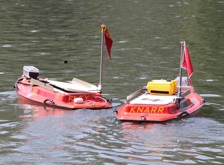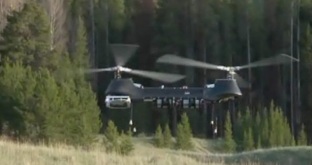ANTIDOTE: Adaptive Networks for Threat and Intrusion Detection Or TErmination
The ANTIDOTE project focus is on the following central question relevant to the force protection and damage control domains - can one design provably correct, decentralized, and robust algorithms for a team of humans and autonomous vehicles which cause the team to be proactive, vigilant, and sophisticated in its response in a setting where communication between team members are unreliable, the behavior of the adversary is unknown, and environment is dynamic (e.g., other entities may be present which are not associated with the adversary or the force protection team)? In a setting such as this, critical information needs to be localized and communicated back to a small group of people for situational awareness and high-level direction. In many force protection scenarios (e.g., is the boat in the distance hostile and about to breach a secure perimeter?) it is not an option to exercise control centrally if the response is to be spatially scalable and timely. This is also true in the damage control domain (e.g., using a static network of sensors embedded in a ship’s hull to localize a breach or deploying reconfigurable robots to shape-change locally to deform into a plug of the right dimensions to fill the gap to repair a ship’s hull).

RESL Laboratory, University of Southern California, 2010









